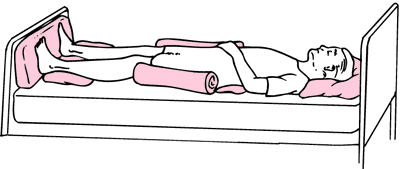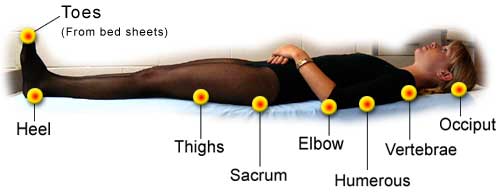What is Supine Position: Facts, Risks, and Benefits
Also known as dorsal decubitus position, supine position is one of the most common surgical positions in an operation theater, which facilitates smoother surgeries. It is considered as the best position to carry out intracranial procedures, a number of the Otorhinolaryngology surgeries, and the procedures that are carried out on the anterior cervical spine, in addition to the patients undergoing cardiac and abdominal procedures, and lower body surgeries including the hips, knee, ankle, etc. (1).
Ideally, in the supine position, the head of the patient rests on the pillows while the neck rests in the neutral condition. The arms of the patient are positioned on the respective sides. You can even keep the arms slightly bent towards the center using the padded arm boards at an angle of 90 degrees. However, it should be ensured that the arms always rest in a supinated position. Patient’s legs are placed such that the knees are flexed with a supporting pillow placed beneath them. This would avoid excess strain on the lumbar spine.
The supine position is recommended in the following cases:
- Supine position is generally prescribed to the patients who have gone through an abdominal surgery to aid the relaxation of the abdominal muscles.
- A patient experiences irregular blood circulation, along with disturbance in cerebral pressure after going through the lumbar puncture. The latter one can also lead to a severe headache. Resting in supine position helps the patients to restore the normal blood circulation and battle the head ache. A research done on a set of pregnant women under the second stage of labor confirms the fact (2).
- The children who are going through the craniospinal irradiation are often prescribed to rest in this position as it helps to avoid the complications that might arise due to the administration of anesthesia.
- It is generally the preferred position when the procedures are to be carried out on the head, neck, and extremes of a patient’s body since it allows better exposure to the peritoneal region, thoracic regions, and the pericardial area of the body.
- Prone position may pose a serious threat to the life of infants as they tend to inhale the same carbon dioxide that was exhaled by them. Therefore, they are generally rested in the supine position. This is why it is known to reduce the rate of sudden infant death syndrome (3).
Disadvantages of Supine Position
Even though it is preferred for many procedures, it is generally discouraged to rest in supine position due to its negative impacts on the body.
Some of them have been listed here:
- The heart has to perform extra work when the body is resting in the supine position. It is because the body is lying in a flat position, which makes it difficult to maintain regular venous return. (4)
- It is generally associated with the onset of obstructive sleep apnea as it causes breathing problems. It is because lying is supine disturbs the airway geometry, decreases the volume of lung, and disables the airway dilator muscles to compensate for the airway collapses (5, 6, 7)
- The patients who depend on the toilet aids for excreting and urinating often feel it difficult to use them in the supine position, and hence, are most prone to constipation and urinary tract infection.
- The supine position does not allow the lungs to inflate completely, due to which, sufficient chest expansion is not possible. Because to this, the secretion accumulates within the lungs, which gets them choked.
- Lying in the supine position may not support the person to carry out regular activities and may also cause the vision to decrease.
- Pregnant women have also often complained of heightened pain during deliveries in supine position (8)







